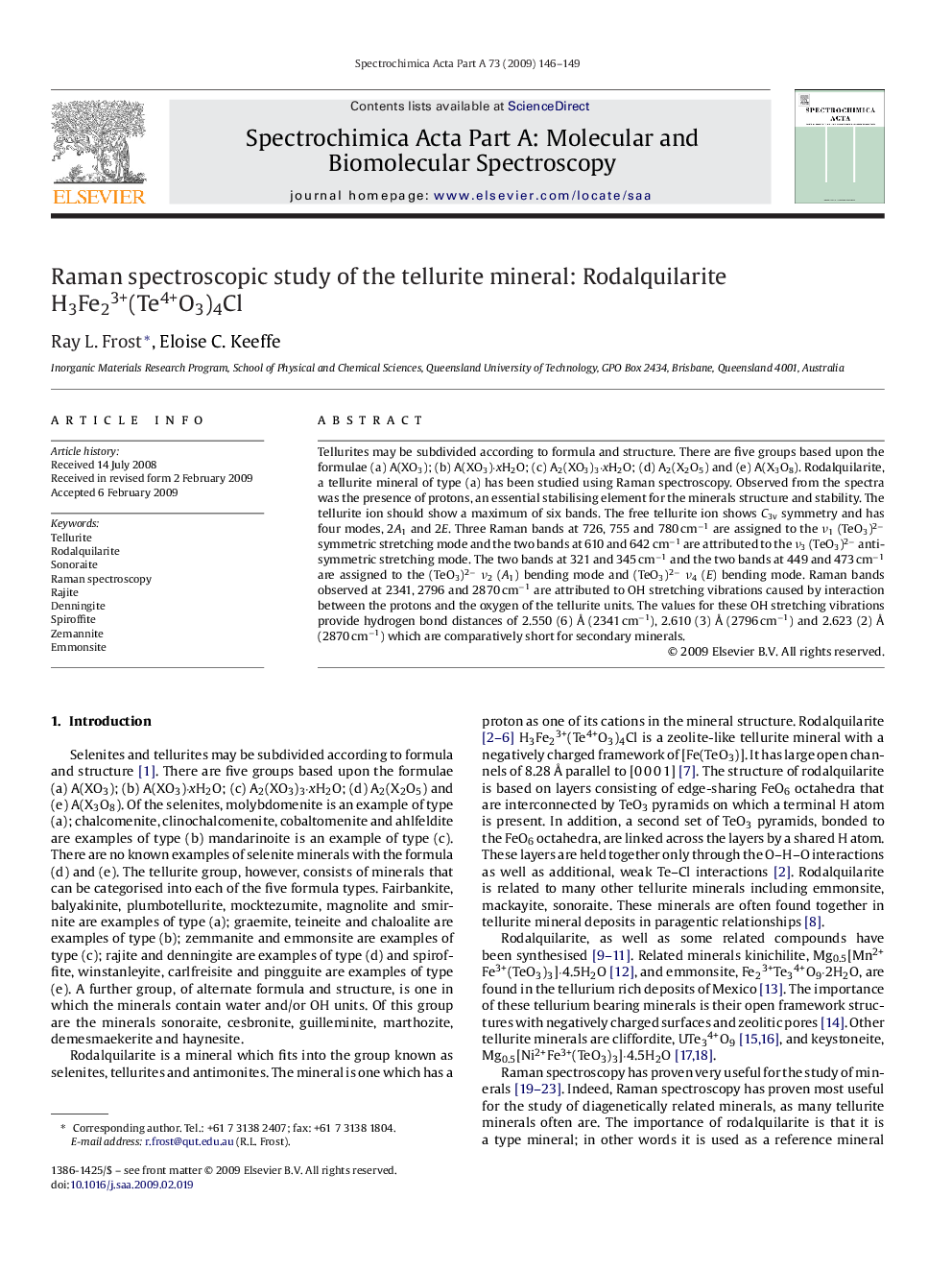| Article ID | Journal | Published Year | Pages | File Type |
|---|---|---|---|---|
| 1234540 | Spectrochimica Acta Part A: Molecular and Biomolecular Spectroscopy | 2009 | 4 Pages |
Tellurites may be subdivided according to formula and structure. There are five groups based upon the formulae (a) A(XO3); (b) A(XO3)·xH2O; (c) A2(XO3)3·xH2O; (d) A2(X2O5) and (e) A(X3O8). Rodalquilarite, a tellurite mineral of type (a) has been studied using Raman spectroscopy. Observed from the spectra was the presence of protons, an essential stabilising element for the minerals structure and stability. The tellurite ion should show a maximum of six bands. The free tellurite ion shows C3v symmetry and has four modes, 2A1 and 2E. Three Raman bands at 726, 755 and 780 cm−1 are assigned to the ν1 (TeO3)2− symmetric stretching mode and the two bands at 610 and 642 cm−1 are attributed to the ν3 (TeO3)2− antisymmetric stretching mode. The two bands at 321 and 345 cm−1 and the two bands at 449 and 473 cm−1 are assigned to the (TeO3)2−ν2 (A1) bending mode and (TeO3)2−ν4 (E) bending mode. Raman bands observed at 2341, 2796 and 2870 cm−1 are attributed to OH stretching vibrations caused by interaction between the protons and the oxygen of the tellurite units. The values for these OH stretching vibrations provide hydrogen bond distances of 2.550 (6) Å (2341 cm−1), 2.610 (3) Å (2796 cm−1) and 2.623 (2) Å (2870 cm−1) which are comparatively short for secondary minerals.
